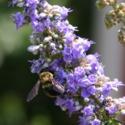 Feeding and Attracting Honey Bees
Feeding and Attracting Honey BeesHelp the bees help you! Green manures planted in and around your garden and flowerbeds are excellent bee plants, offering pollen to the hive as a food source. The more varieties of plants the better, encouraging successive flowering. In the vegetable garden often-times a planting such as clover and/or buckwheat will be enough to provide a consistent diet for them and does double duty nourishing your soil as well.
 Indoor Plants for Better Indoor Air Quality
Indoor Plants for Better Indoor Air QualityGrow fresh air in your house! One of the best air purifiers is the Peace Lily (Spathiphyllum). Listed as one of the “Top air filtering" plants rated on a research study by NASA, the Peace Lily offers greenery, beautiful white flowers, and the ability to remove toxins from the air. Moist soil and moderate sunlight keeps it happy.
 Better Okra Germination
Better Okra GerminationTo get quick germination of okra seeds some people soak their seeds overnight. Better yet is to freeze the seed a day or two before sowing. This breaks the hard seed coat and works much better than soaking. And remember, sowing okra in cool soil will still contribute to seed rot/poor germination so allow your soil to warm up before sowing.
 Build Your Soil with Organic Matter
Build Your Soil with Organic MatterSandy soil? Clay soil? The best soil needs moisture-holding ability as well as draining ability. The perfect balance can be attained by adding organic amendments such as pine fines or composted leaves/bark/manure. For nutrient needs, please utilize your local Ag Extension office and have your soil tested so you know which fertilizer and amendments need to be added. In some cases, nothing needs to be added!
 Outsmart the Squash Bugs
Outsmart the Squash BugsHave squash? Have bugs? Have squash bugs? (One of the hardest pests to get rid of.) Try watering squash plants from top to bottom with your hose wand. This makes the adults want to come to the top of the plant to dry off in the sun. Once they are out in the open, come back in a few minutes and spray with a mix of soap spray and rubbing alcohol. It’ll sure get most of them!
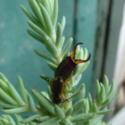 Trap Earwigs in Bamboo
Trap Earwigs in BambooGot earwigs? Nope, folks, not small toupees one wears on their ear bones but rather small brown bugs, usually scary looking because they sport pincers on their hind end. Although they normally eat decaying plant matter and certain insects they’re also known for feeding on lettuce, corn and potatoes. Try trapping them in a section of bamboo laid in the garden. They’ll crawl inside for cover and then you can dispose of them any way you choose.
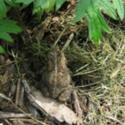 Got Toads?
Got Toads?Lions and Tigers and Toads, Oh MY! Well, nix the first two but the latter is a must in your garden! Ninety percent of a toad's diet consists of insects as well as other small creatures (think cutworms!) Encourage them to linger by providing a toad abode (upturned flower pot, box, etc) and a shallow pool for drinking and cooling off in on hot days.
 Night-Time Fragrance!
Night-Time Fragrance!The absolutely best vine for your deck or porch, or near an open window, is the Moonvine (Ipomoea alba), not to be confused with Moonflower. Grown on a trellis or deck railing, its night-blooming 6” pure white flowers offer a fragrance to behold. Pull up a chair in the evening and watch the flowers unfold before your very eyes!
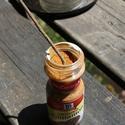 Cinnamon Makes a Great Rooting Hormone Substitute!
Cinnamon Makes a Great Rooting Hormone Substitute!Out of rooting hormone? Open your kitchen cabinet and grab some cinnamon. Plant stems dipped into it will kill fungus and bacteria to help keep those new cuttings free of disease while rooting.
 Water Rooting Your Cuttings
Water Rooting Your CuttingsWhen rooting your cuttings in water, remember they’ll need adapting to soil when the time is right. Water-rooted cuttings grow roots suited for water but they’ll need to grow "soil roots" for best health when potting up. Help them along by adding soil to your water as you witness root growth coming on.
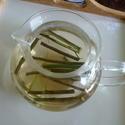 Willow Tea for "No Cost" Rooting of Cuttings
Willow Tea for "No Cost" Rooting of CuttingsNeed a "no cost" solution for rooting cuttings? Try willow tea. Use green willow branches steeped in warm water and cooled overnight, This solution will stimulate rooting, growth, and good health for cuttings as well as for established plants. The growing tips of willow branches possess high levels of the auxin indolebutyric acid, a synthetic form of which is used in most commercial rooting compounds.